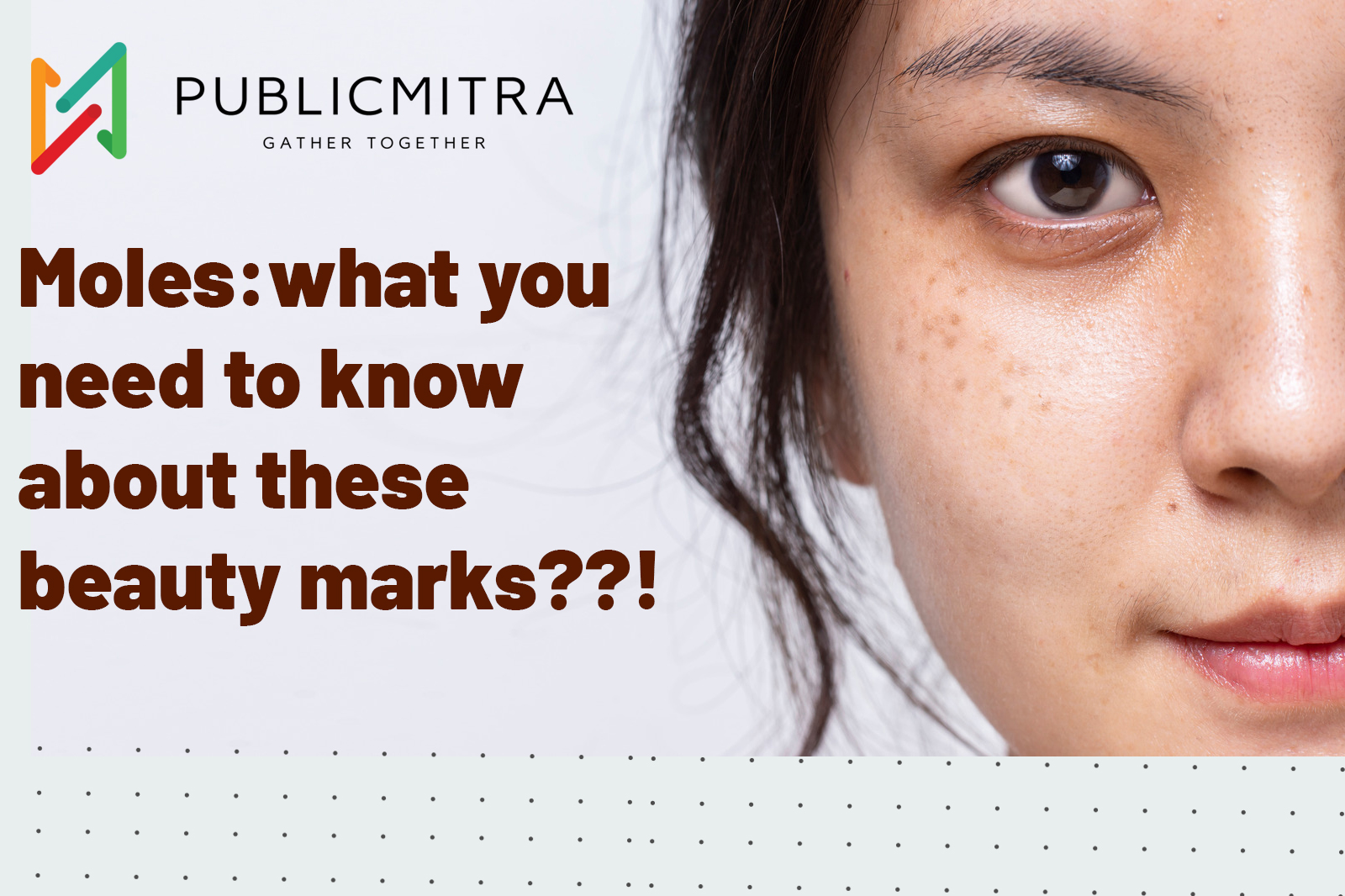Moles: What You Need To Know About These Beauty Marks??!
Moles, also known as nevi, are common skin growths that can vary in size, shape, and colour. While moles are generally harmless, their presence can sometimes indicate certain characteristics or potential health risks. It’s important to know about them and what they might be telling you.
Moles, or these pigmented nevi, can be either benign or malignant. Some can be large, some pinpoint, some flat, some elevated, and some hairy too. Here are some points to remember about them:
Number of Moles: The number of moles on your body is primarily determined by genetic factors. People with a higher number of moles, especially those over 50, may have an increased risk of developing skin cancer, such as melanoma.
Location of Moles: The location of moles on the body is generally random. However, certain types of moles may have specific associations. For example, moles on the face may be more common and may not have significant health implications. Moles on the palms, soles of the feet, or mucous membranes are less common and may warrant closer attention as they could be atypical or indicate other conditions.
Asymmetry: A mole that is asymmetric, meaning one half does not match the other half, may warrant further investigation. Asymmetrical moles can be a potential sign of melanoma, a type of skin cancer. It’s important to consult a healthcare professional if you notice any irregularities or changes in the appearance of your moles.
Border Irregularity: Moles with irregular or poorly defined borders may be a cause for concern. Smooth and well-defined borders are generally considered normal. Irregular borders can be an indication of abnormal cell growth and may require further assessment.
Colour and Size: Most moles are brown, but they can also be tan, black, red, or pink. While colour alone does not necessarily indicate a problem, moles that have multiple colours within them, are very dark, or have recently changed in size or colour should be evaluated.
Changes Over Time: Monitoring the changes in moles is crucial. If you notice any changes in size, shape, colour, or texture, or if a mole becomes itchy, painful, or starts bleeding, it’s important to seek medical attention. These changes may be an indication of skin cancer or other dermatological conditions.
If you notice any of these changes, it is best to consult a dermatologist.












